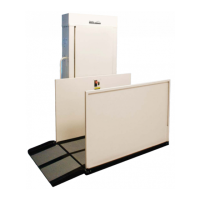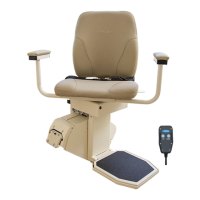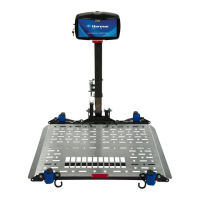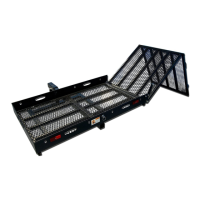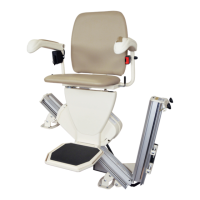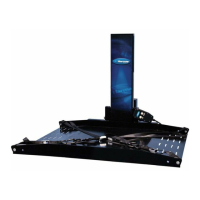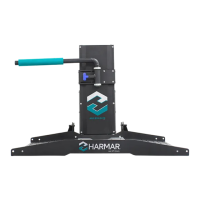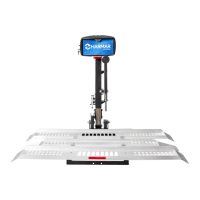Do you have a question about the Harmar Mobility HIGHLANDER II and is the answer not in the manual?
Explains safety alert symbols like Warning, Caution, and Notice.
Discusses technician assessment of surrounding conditions before installation.
Outlines compliance with ASME A18.1 and installer's responsibility for local codes.
Details ASME A18.1 requirements for commercial/residential installations.
Defines applicability for commercial/public locations.
Defines applicability for residential use.
Specifies operational cycles per hour based on lift height.
Lists essential tools and hardware for installation.
Lists additional tools for convenience and safety.
Lists items that must be sourced separately for electrical connection.
Provides guidance on how to unload the lift from its shipping pallet.
Steps for unwrapping and inspecting components after unloading.
Advises on safe methods for moving the lift components.
Specifies requirements for shaft construction and electrical rough-ins.
Covers power requirements, inspection, and clearance checks.
Step-by-step instructions for initial lift assembly and positioning.
Details initial steps for connecting temporary power.
Instructions for installing and connecting the battery backup system.
Steps for attaching the platform to the carriage.
Instructions for mounting the control box to the guard panel.
Steps for attaching the platform gate assembly.
Instructions for installing the front guard panel.
Steps for attaching the auto-folding ramp and roller guide.
Instructions for wiring and mounting the top landing gate.
Guidance on installing fascia panels for a smooth platform edge.
Procedure for adjusting the upper limit switch.
Instructions for mounting call stations and routing wires.
Guidelines for installing external door interlocks and strikes.
Steps for final placement and securing the lift tower.
Instructions for positioning and anchoring fixed ramps.
Operational checks for internal tower safety features before final assembly.
Final steps for reattaching panels and reconnecting power.
Procedures for verifying lift operation after installation.
Details for connecting the lift to a permanent power source.
Guide for demonstrating lift operation to the customer.
Checklist for initial site preparation requirements.
Steps for positioning the lift before platform assembly.
Checklist for assembling the platform components.
Steps for installing the landing gate.
Checklist for fascia panel installation.
Checklist for final positioning and anchoring.
Checklist for verifying critical clearances.
Checklist for electrical connections.
Explains the meaning of the 4-LED status indicators on the top cap.
Guides on accessing control electronics below the top cap.
Identifies components on the control electronics tray.
Details the components and connections on the control board.
Explains the function of the brake momentary switch.
Explains the function of the reset momentary switch.
Explains the use of the service momentary switch.
Describes the function of permanent jumpers on the control board.
Details the gearmotor specifications and operating limits.
Identifies components in the contactor tray.
Explains the function of up and down contactors.
Explains the function of the E-Brake resistor.
Explains the function of load resistors and their heat generation.
Explains the function of the cooling fan.
Locates and describes the battery backup system.
Details battery types and series/parallel wiring.
Describes the battery charger specifications and charge time.
Explains the function of the battery check relay.
Describes the inverter's function and potential faults.
Explains float switch triggers and "out of service" mode.
Advises on procedures during lift malfunctions while occupied.
Details the procedure for manually lowering the lift.
Safety and checks for residential users before and periodically.
Notes for commercial applications, emphasizing local requirements.
Recommended semi-annual maintenance tasks.
Recommended annual maintenance tasks.
| Weight Capacity | 350 lbs |
|---|---|
| Warranty | 2 years |
| Battery | 12V |
| Power Source | 12V Battery |
| Platform Size | 30" x 48" |
| Operation | Handheld remote control |
